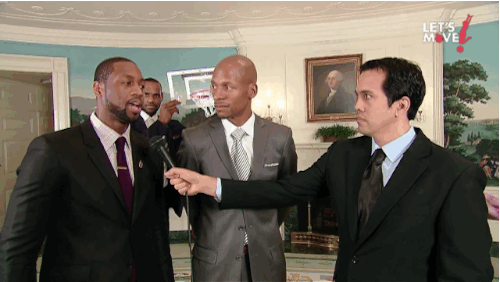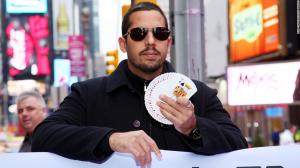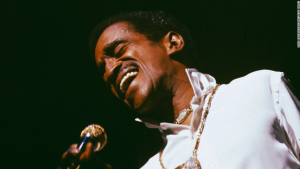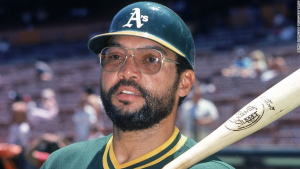The Online Avengers
Are antibullying activists the saviors of the Internet — or just a different kind of curse?
1/15/2014 | The New York Times
We just need the names of the 4 young men that raped and demoralized Rehtaeh Parsons and are guilty for her suicide
#OpJustice4Rehtaeh
Demand an independent inquiry into the police investigation.
#OpJustice4Rehtaeh
Ok! Tweet a screenshot that shows abusive threats (+ sexual harassment) + his Twitter handle at us & we’ll set up.
#OpAntiBully
One day last April, a 25-year-old named Ash smoked a cigarette in the garden of his London workplace and scrolled through the Twitter feed on his phone. He stopped at the headline “Who Failed Rehtaeh Parsons?” and clicked on the link, which took him to the website of The Chronicle Herald, a Canadian newspaper. The article was an example of the kind of story, about a mistreated and suffering teenager, that Ash spends a considerable portion of his life searching for online, the kind that makes him feel, as he puts it, “very rustled up.”
Ash, who asked me to use only his first name because of his online activism, learned from the article that when Rehtaeh was 15, in September 2011, she started a new high school in Nova Scotia, where she knew hardly any of the students. On a Saturday night that fall, a new friend invited Rehtaeh to go with her to the home of a boy in their school. Three other boys were also there, and the group started drinking heavily. Rehtaeh would later say that she thought she had nine shots of vodka. The girl who invited Rehtaeh said later that she left after she got angry at Rehtaeh (apparently over one of the boys), but later returned to the house with her mother looking for her. They tried to get Rehtaeh dressed and make her leave, but say they couldn’t. They didn’t call her parents; the girl asked her mother not to get Rehtaeh in trouble. Rehtaeh didn’t remember any of that taking place. She woke up the next morning between two of the boys, without knowing how she got there, and got up and took the bus home.
Actually sorry just looked. You are clearly being harassed. Saw your screenshot. Would you like to DM?
#OpAntiBully
The four boys soon started texting and talking to other students, claiming that Rehtaeh willingly had sex with each of them. The rumors whipped through the student body, along with a cellphone photo, taken by one of the boys, of another boy having sex with Rehtaeh.
The following Saturday, Rehtaeh and her mother, Leah Parsons, went to the Royal Canadian Mounted Police and reported that she had been raped. A few days later, when they were able to get a copy of the explicit photo, they took it to the police and were told there would be an investigation. According to Leah Parsons, it then took 10 months for the police to try to interview the boys, who refused to talk to them. Their phones and computers were never searched, Parsons says. (A spokesman for the R.C.M.P. said he could not comment on the investigation.) A year after Rehtaeh made the rape claim, the police told her they didn’t have enough evidence to bring charges, either for assault or for distributing the photo, which could be considered illegal under child-pornography laws.
In the months that followed, Rehtaeh cycled between intense bouts of shame and humiliation. She had been a good student; now she didn’t want to go to school. “Rehtaeh was suddenly shunned by almost everyone she knew,” Leah Parsons wrote on Facebook. “She struggled emotionally with depression and anger.” Rehtaeh switched schools and made a few new friends, but she still felt hounded by the events.
In early April 2013, Rehtaeh hanged herself in the bathroom of her home. Her parents blamed, in part, the decision not to prosecute for her suicide. “The justice system failed her,” Leah Parsons posted on her Facebook page. Rehtaeh’s father, Glen Canning, wrote on his website: “How is it possible for someone to leave a digital trail like that yet the R.C.M.P. don’t have evidence of a crime? What were they looking for if photos and bragging weren’t enough?”
As Ash read those questions in the garden in London, he felt a rising anger and clear sense of purpose. Rehtaeh was yet another victim, not just of the boys who had hurt her but of an indifferent system of law enforcement that further destroyed her reputation and sense of self by allowing them to get away with it. Ash was one of a growing number of Internet activists who try to protect vulnerable teenagers and avenge online bullying and sexual assault. He vowed that day he would do something about Rehtaeh Parsons’s death.
Six months earlier Ash encountered another case of teenage suicide, this one involving a 15-year-old from Vancouver named Amanda Todd. Before she killed herself, Amanda posted a video on the Internet in which she described how a man persuaded her to flash him online, then used her topless screen shot to stalk and blackmail her.
After reading about the case and following the reaction to it on Twitter, Ash began messaging with a Canadian geologist in her 30s who goes by the alias Katherine Wells. Katherine, too, was moved by the story and had reached out to Amanda’s mother and won her trust. Ash was impressed by Katherine’s willingness to take action and insert herself into events, and they decided to team up to help children and their families. The group, which they called OpAntiBully, soon grew to a core of eight, including two experienced hackers, and eventually a handful of others signed on, including a doctoral student in psychology in her 30s living in Scandinavia and a 14-year-old Dutch teenager whose parents didn’t know about his online life.
None of the OpAntiBully members ever met in person, but they began spending hours working together online, using encrypted email accounts or chat rooms for anything they deemed sensitive. Katherine set up a Twitter account, @OpAntiBullyInfo, and encouraged young people who felt victimized to seek them out. OpAntiBully members posted links to resources for depressed teenagers and responded to pleas for help. Sometimes they would offer informal online counseling or send a flurry of encouraging messages to a desperate-sounding soul out in the ether. Other times they would take more aggressive measures, tracking down and exposing the identities of supposed wrongdoers who the group felt had not been brought to justice. Public shaming is a standard tool for this kind of activism, and it was part of OpAntiBully’s approach from the start — “it can be great fun to bully the bullies,” Ash says.
This kind of outing, known as doxxing, involves scouring the Internet for personal data (or documents, the source of the word “doxx”) — like a person’s name, address, occupation, Twitter or Facebook profile — and then publicly linking that information to the perpetrator’s transgression. The process can be as simple as following a trail the target has left behind or it can involve tricking someone into revealing the password to a personal account or hacking into a website to obtain private information.
The exposure, Ash says, is its own punishment. “People need to learn from their mistakes,” he said. “If it takes shocking or scaring them to do that, so be it. And sometimes we have apologies coming in, because people realize that what they’ve done is wrong.”
OpAntiBully did its first major doxx in the fall of 2012 of four teenage boys in Texas who threatened a 12-year-old girl in New Zealand. She had never met the boys, but she was following one of them on Twitter, and then stopped after he tweeted something she didn’t like. The boy told her that he and three of his friends would “gang bang” her and that she should kill herself. “It’s scary to think people in the world want you to die :(,” the girl wrote to Katherine, after connecting with her online. Ash traced the boys’ Twitter accounts to their real names, figured out where they went to high school, then sent screen shots of their tweets, with their names and Twitter handles, to school officials.
A couple of months later, Ash and another member saw a tweet under the hashtag “#pakisout.” It was a photo of a young girl who looked South Asian, along with a threat to hit her with a hammer. The two were able to track down the identity of the person who had posted the photo — a plumber in Scotland who they thought was working at the girl’s home. Despite all the ugliness he was seeing on the Internet, Ash told me his work buoyed him, especially when he was feeling low. “When we pieced together who [the plumber] was, it was all worth it,” he said. “It gives you a kick when you need it.”
Ash and the two hackers in OpAntiBully are active members of Anonymous, the loose collective of agitators, hackers and pranksters who for the past decade have periodically banded together on the Internet to protest or take matters into their own hands in the name of any number of causes. Anonymous has no structure — no official leadership or hierarchy — and operates through a constellation of subgroups, which form and reform, around specific operations (ops for short). Anons, as they call themselves, like to say there are no rules, which means that at any given moment, Anonymous can be whatever someone says it is, and “membership” has more to do with a sense of mission than with formal belonging.
In its early days, around 2006, Anonymous was about the “lulz,” or the laughs, often crass pranks that were directed at anyone who set the group off. But in the past five years, the group has become increasingly politicized, coalescing at first around the defense of free speech and an uncensored Internet. In the last year or so, Anonymous has taken on what’s called “white knight work,” which has mostly involved coming to the aid of girls who say they were the victims of sexual assault that the police failed to address. White-knight ops aren’t about Internet freedoms, but they are in keeping with the Anonymous ethos of distrusting and challenging mainstream authority. “When you see a convergence of scumbaggery and the sense that the police are not doing their jobs, along with hypocrisy and corruption, that definitely interests Anonymous,” says Gabriella Coleman, an anthropologist at McGill University who is working on a book about the group. As one veteran Anon called Crypt0nymous told me, “People have to bring justice in the name of the law if the government does not do it.”
Anons tend to see the cases in which they intervene in polarized terms, parables with an innocent victim, evil perpetrators and ineffectual (or corrupt) law enforcement. There have been notable instances in which the pressure they created from a distance brought needed scrutiny to a case that had otherwise been ignored or buried. But because these activists have no local roots, they can also be blind to important subtleties and wind up falsely accusing or demonizing innocent people. Whether an op does good or ill depends entirely on the care of the people who sign on, because there are no built-in checks, no authority figure who can call off Anonymous.
On the day in April when Ash first learned about Rehtaeh Parsons, he spent his lunch break sending messages about the case to several OpAntiBully members. The group quickly agreed that the first goal was to figure out who the boys were. Members of the team started looking for clues on social media.
Ash had to go back to his day job, but, he said, “every spare moment I had I would check my accounts and see how everything was coming together.” At day’s end he rushed to the bus stop for his hourlong commute, arriving at the home he shared with his girlfriend of nine years and then spending the rest of the evening working on tracking down the boys’ identities. “For nothing to happen to the boys who did that to Rehtaeh, . . .” Ash said. “We wanted to strike fear into their hearts.”
Last summer, I waited for Ash at a bus stop in south London. We had been emailing for months, but this would be the first time I met him in person. I stood at our appointed spot until a tall guy with a fair complexion approached me. He wore a black T-shirt and carried a frayed backpack. He told me his age and asked if I had expected someone older, though I hadn’t.
Hi ❤ sounds like you went thru a bit of a rough day. We are here to talk & assist if u like. Following u now. DM anytime ❤
#OpAntiBully
We walked to a shady courtyard by the Thames for lunch. Ash has a nervous habit of cracking his knuckles. A tattoo on the back of one arm reads, in looping cursive, “I swear I’ll never give in or refuse.” In high school, he said, he hacked into his online yearbook and turned some of the entries about individual students into jokes. “I changed loads of them,” he said with a grin. The stunt got him kicked out of his classes for business and I.T., Ash said, and he was told he “had no future.” Instead of university, he went to night school to learn engineering. His work was steady but he found it dull; it’s his activist life that consumes him and feels full of promise and opportunity. “It’s hard for me to turn off my laptop at night,” he said, acknowledging that this was a source of tension between him and his girlfriend. When the three of us ate dinner together, she made clear that she had no desire to talk about OpAntiBully. And yet that was the subject that made Ash light up. His dream, he said, was to apply for a grant to start a website devoted to white-knight work. “If I could quit my job and do this all day long, 10 hours a day, the effect and the fulfillment would be massive,” he said.
If Ash’s girlfriend didn’t appreciate this, his fellow OpAntiBully members did. I talked to Ash and Katherine together over Skype soon after they started OpAntiBully. They were like a couple in the honeymoon phase of a relationship, finishing each other’s sentences and insisting that it didn’t matter that they had never met in the real world. “It gets to a point where the realism of someone — what they look like, what they do for a living — is secondary,” Ash said. “You really get to know people online. If anything, they share more.”
The relationships between Ash, Katherine and other members of OpAntiBully were intimate and intense enough to create their own reality: a thick web of romanticized expectations. When I asked whether anyone in the group had experience working with teenagers, Ash said no, but that it didn’t matter, because Katherine “is brilliant at talking to people. She’s the mother hen.”
In London, I talked to five members of the group over a messaging service called ChatCrypt. Ash sat next to me, reading along on his battered Samsung laptop. When I asked about issues of trust, Rabz, the 14-year-old Dutch boy, instantly typed back referring to some of the other members by versions of their Twitter handles: “PA, Ash, BBJ and Hooligan are basically my big bros, and Pri is my sis.” Primus, the Scandinavian graduate student, wrote: “We both work and play. We are friends. What do you do with your friends? We do the same. Online. Across borders.”
“I’d never trust my IRL [in real life] friends the way I trust these folks,” BBJ wrote.
Rabz concurred: “IRL friends don’t share the passion like us.”
“I have few solid irl friends,” Primus wrote. “But my real social life is online. That may sound sad for an outsider. But I am a very content and fulfilled person. These people share my values. My passion. And most of them have never even seen my face. It’s a special kind of love. Free from judgment — that most people encounter in the real world.”
Ash has been looking for this kind of community since he took his first step toward online activism about six years ago, by “lurking” on a chat board called 4Chan /b/, where users competed to post the most grotesquely memorable images. 4Chan /b/ was a venue for shared dark humor; the posts (mostly by men) were often also offensive or explicit. Some users went on to start Anonymous. “The key to 4Chan was that someone who just stumbled on it would never want to go back,” Ash said, explaining that the crude nature of the content helped to wall off the insiders. “You wanted it to be as gut-churning as possible, so what you get is a tightknit group of people who don’t seem to have strong ties outside and become incredibly close on the web.”
When I asked Ash how he squared his ongoing affection for the creepiness of 4Chan with his work for OpAntiBully, he said it was all about intent. “I’m fine with taking it quite close to the bone. But never with malice. That’s the difference.” Plus, he said, “adults can sort things out for themselves. We’re here for the well-being of kids.” He described how he was pushed around as a young boy and decided, when he started secondary school, that he’d had enough. “I didn’t want to be in that victim role anymore.” He also told me about becoming close to a girl, when he was in his teens and 20s, who was being sexually abused. The relationship led him to read books about rape and sexual coercion, and he came to the understanding that “it’s about dominating girls. It’s less about the sex and more about control.”
Ash seemed reasonable and sensitive, and yet it was hard to reconcile that young man with the one whose merciless anger I sometimes saw flare online. Soon after my trip to London, Ash got into a fight on Twitter with a 29-year-old British feminist, Caroline Criado-Perez, who had started a campaign that helped persuade the Bank of England to put Jane Austen on the £10 note. After she became the target of a stream of online threats, Criado-Perez went to the police, who arrested and charged two people. At one point, she threatened to report a friend of Ash’s who tweeted that she “could do with getting layed.” In response, Ash joined the Twitter attack on her and used a harsh misogynist epithet. To Ash, Criado-Perez wasn’t a woman who was being bullied for her views; she was a publicity hound baiting men to go after her and who “enjoyed being in the role of victim.” He refused to give her credit for trying to control her own narrative, and he didn’t see how berating her might be at odds with his stated desire to help victimized girls. “I don’t care about her feelings,” he said. “It doesn’t reflect my morals regarding what I do with children.” In the river of victimhood on Ash’s Twitter feed, a few stories moved him to ride to the rescue, but others earned only his scorn.
The first high-profile white-knight op that drew in Anonymous began in August 2012, after photos and videos circulated online suggesting that a 16-year-old girl had been sexually assaulted at a party in Steubenville, Ohio. Less than two weeks after the party, two high-school football players were arrested and later charged. While it wasn’t a case in which the authorities failed to act, a blogger who used to live in Steubenville claimed there was a larger cover-up of other rapes, involving athletes in the community. An Anon with the handle KYAnonymous put out a call for evidence and soon received a video, which he posted on YouTube, of another football player talking for 12 minutes about the assault on the girl, saying things like “she is so raped right now” as an audience of boys laughed wildly.
The video was viewed more than two million times and helped prompt a national conversation about sexual assault, sports and drinking. When the two teenagers were convicted last March, KYAnonymous (along with the blogger) got credit in the online community for helping to prosecute the perpetrators in the court of public opinion.
Other activists were openly critical of KYAnonymous’s work, however, saying that he took part in illegally hacking the high-school football team’s website and posting unproved accusations on a local website. (When I spoke to him, KYAnonymous denied participating in the hack and said he didn’t wrongfully accuse anyone.) In April, the F.B.I. raided his home in rural Kentucky, presumably in connection with his role in the Steubenville case. Afterward, KYAnonymous went public with his real name, Deric Lostutter, asked for donations to pay his legal bills, promoted his rap music online and posed next to his truck, holding a couple of beers, with his sleeves rolled up to show off a large tattoo, for a profile on Gawker. “You think you’re a god?” Lostutter, who is 26, said about his online targets. “I’m gonna take you down a notch. I’m that kind of person.”
Although many Anons condemned Lostutter for glory-seeking, the events in Steubenville revealed the dark side of white-knight vigilantism as much as its capacity to shame wrongdoers. As one Twitter user (not from Anonymous) wrote to me: “Do we really want mob mentality and the unaccountable influencing prosecutorial decisions? Today it’s good. Tomorrow?”
Last July, I spoke with an Internet activist who would allow me to refer to him only as Elias, an old online handle, about his involvement in the Rehtaeh Parsons case. Before the 2008 presidential election, Elias, who is in his late 20s, was a pro-Obama political blogger. When the president took office and didn’t crack down on the big banks, Elias became disenchanted and joined the Occupy movement. But he quickly became frustrated with the group’s decision-making process. “I wanted more structure,” he said.
Elias started working with Anonymous during the Arab spring, when the group helped dissidents throughout the region circumvent government-imposed blackouts of the Internet. His main contribution was writing news releases — he was interested in political organizing, not hacking. But he saw the second as a tool of the first. “I’ve never committed any cybercrimes, to my knowledge,” he said. “I’m still nervous about all of that. But if Anonymous didn’t hack or take sites down, you wouldn’t be talking to me right now. To raise awareness, we are required to resort to spectacle.”
Elias learned about Rehtaeh’s story on Twitter on the same day that Ash did, and he, too, wanted to exert pressure on the authorities to reopen the investigation. The Canadian police and the Justice Department had publicly defended the decision not to prosecute, and Elias thought that rape would be hard to prove, especially without Rehtaeh’s testimony. But he also thought that the boys’ disseminating the photo of her having sex could be illegal. The easiest way to get media attention for a renewed push to press charges was to threaten to doxx the boys, and so Elias tweeted about starting a new white-knight action, using the hashtag #OpJustice4Rehtaeh.
When Ash saw the tweet, he and OpAntiBully had just started to work on their own doxxing, and he messaged Elias to discuss joining forces. They were both a little wary, having never worked together, but they had mutual contacts, which each used to do the Anonymous equivalent of a reference check. With other groups sprouting all over the Internet, Ash and Elias were each looking for a reputable partner. When Elias invited Ash to join OpJustice4Rehtaeh and to bring his team with him, Ash felt it was a moment of affirmation. “You can’t get into the ops with big names, like this one, out of the blue,” he said.
Please reach out to @_BON3S struggling with suicidal thoughts at this very moment.
#OpAntiBully
For the doxx, Elias set up a password-protected shared document — a safe work space. No one was allowed to give out the password without group approval. Elias also tried to control the information flow from his own group, contacting local reporters and telling them he would be posting documents or videos through YourAnonNews, a Twitter account with more than a million followers. The idea was to keep OpJustice4Rehtaeh distinct from other Anonymous subgroups that were forming to work on the case and that Elias worried might make false accusations. “Everything we did was because I didn’t like how aspects of Steubenville went,” he told me.
The OpJustice4Rehtaeh team divided their responsibilities. Katherine helped lead a group that concentrated on a Facebook page called Speak the Truth, which was started by the family of one of the boys accused of rape, to declare his innocence. The police warned the family that they had implicated their son by naming him, and the family took the page down — but not before Katherine and her team took screen shots and collected information on about 130 people, many of whom were harshly critical of Rehtaeh.
The rest of the op focused on determining the other three boys’ identities. They confirmed a second teenager’s involvement and figured out that his mother owned a business, and from there it was easy to collect information about her. The working document soon ran to 37 pages. At the top was a list of rules (or rulez), which included jokes (“No smoking in the chat room”), actual rules (“Invitations are by 100% consensus”) and admonitions (“Get sleep. Working 36 hours straight makes you sloppy”).
Three days after Rehtaeh’s death, on April 10, Elias posted a news release saying that Anonymous had confirmed the identities of two of the four accused rapists. In a related video, a figure in a Guy Fawkes mask, the Anonymous trademark, intoned in an automated voice: “Our demands are simple. We want the [Nova Scotian police] to take immediate legal action against the individuals in question. We encourage you to act fast. If we were able to locate these boys within two hours, it will not be long before someone else finds them.” The voice signed off with the group’s slogan: “We are legion. We do not forgive. We do not forget. Expect us.”
Leah Parsons, Rehtaeh’s mother, watched the video. It was the first time she ever heard of Anonymous. “I was a bit hesitant and a bit nervous,” she told me. “You have to ask: ‘Who are these people? What are their intentions?’ ”
Parsons didn’t want to call off Anonymous, but she also felt she couldn’t condone vigilante justice. In a TV interview that day, she said: “I want the justice system going after those boys. . . . I don’t want people going after those boys.”
Her stance was a blow to Ash and others working on the op. “That knocked us back,” Ash said. The group had nailed down the identities of all four boys, and there were plans for a live demonstration to protest the police handling of the case. Elias and Ash thought the group should respect Parsons’s wishes, but others itched to expose the boys anyway. “It was hard to hold them back, ” Ash said. “People wanted to release what we knew.”
Meanwhile, Anons outside OpJustice4Rehtaeh were also trying to doxx the boys and were making their suspicions public, in one case falsely accusing a boy whom OpJustice4Rehtaeh had cleared. “My life right now is falling apart because of this,” the teenager told CBC News. He said that he worried that he could be in danger because people would blame him for Rehtaeh’s death. “I always have to look out, behind my back,” he said.
Elias reached out to his press contacts to vouch for the boy, but he didn’t feel responsible for the false accusations. “I can’t control what other people are going to do,” he told me. “That’s how Anonymous works. I can’t tell anyone else what to do, and I can’t stop them.” Despite Elias’s efforts to separate OpJustice4Rehtaeh from the other Anon groups, to most people on the outside, the ops were indistinguishable.
This made it difficult for the police to make use of the leads they were being fed. “Sometimes they might have good intent, but some we don’t know, and that’s a predicament,” a Halifax police spokesman, Scott MacRae, told me. In a TV interview, MacRae warned that the groups themselves were potentially in violation of the law. “If there’s threats on the Internet,” he said, “it may be something the police will have to further investigate.” Elias and Ash watched the clip on YouTube and laughed at the notion that they could possibly be outsleuthed by the police. But if it was easy to understand their derision of the police, it was also clear why the antagonism was mutual. MacRae told me, “People are being tried in the court of public opinion, and that’s where it gets dangerous.”
The major break in the case came from an unexpected source: one of the boys accused by Rehtaeh. In the middle of the night, the boy whose family had started the Speak the Truth page sent a message to Leah Parsons via Facebook. He was asking to meet her. “I read it and thought, Are you kidding me? I cannot look at you,” she told me. “I wrote back saying no.”
The boy replied: “O.K. I understand, there may be things in this that may be very disturbing to you, but I need to let you know.” He described drinking with Rehtaeh and another boy, whom he named, and said they both had consensual sex with her. The sex continued, the boy wrote, but “Reh looked like she was going to get sick, so I asked her, and she said she was good but then she started to quinch a bit.” The boy opened the bedroom window and he and the other boy “helped her over so she could get sick, she was out the window for about 5 mins.” The boy said he kept having sex with her, and “being a drunk idiot, I posed for the picture.”
Two other boys, whose names he also provided, tried to carry Rehtaeh into another room. One of them “tryed to pick her up and she hit him in the face,” the boy wrote. Later, he learned that the other two boys had sex with Rehtaeh that night, too. “Even though I am good friends with all of them I cannot lie to you and say we all did not rape her,” he wrote. “I can tell you for sure that I did not rape her and while I was at the house I did not see any of the other 3 boys do anything that would cause her harm.” He also wrote, “Yes I will admit to bragging about the picture for a few weeks and Yes I did send it to some people. . . . I have a lot of people mad at me over this. . . . That picture ruined my life and it is the worst thing that happened to me, I am truely very sorry for this.” He closed by explaining that when the news of Rehtaeh’s death hit Facebook, people he knew sent him messages blaming him. “I then went to my room and cryed.”
Leah Parsons felt sick for her daughter, but she also saw the message as an admission — grim vindication that Rehtaeh had told the truth. She turned it over to the police, and also to OpJustice4Rehtaeh. “I gave it to them, and then I thought: I don’t really know who they are,” Parsons told me. “But they’d respected everything I’d said. I thought, If pressure from this group is what it takes, let them do what they do.”
Elias wrote another news release, demanding police action, and sent it to YourAnonymousNews. Meanwhile, an Anon outside of the op broke the law by hacking into the boy’s Facebook account. The person found another version of the note he wrote to Parsons and sent it to an encrypted account the op had set up for tips. When the boy’s family found out about the hacking, they tried to fight back. “Your saying your sticking up for a girl who was bullied but yet you nasty people are nothing but cowards to hide behind anonymous and hack teenagers facebook profiles,” the boy’s sister wrote on Facebook. “Your just as bad as the ones who bullied her.”
On the morning of April 11, Stephen Harper, the Canadian prime minister, made his first statement about Rehtaeh’s death. Instead of defending the police and prosecutors, as his Justice Department did, Harper sounded the call for indictments. “What we are dealing with in some of these circumstances is simply criminal activity,” he said. “It is violent criminal activity. It is sexual criminal activity.” MacRae was back in front of the media the next day to announce that the police would reopen their investigation, citing “new and credible information.”
MacRae stressed that the new lead — the Facebook message Leah Parsons passed on to the police — “did not come from an online source.” To Ash, Elias and the rest of their celebrating team, this was mere face-saving. They felt they were instrumental in shifting the stance of the entire Canadian government. “It’s quite a nice feeling when you can see the authorities are wrong, and you can twist their arm behind them to get them to change course,” Ash said. In the end, they hadn’t publicly doxxed anyone, which made the victory sweeter for Elias. “If we’re smart enough, we don’t even have to resort to those tactics,” he said.
Flush with success, Ash and Katherine channeled more of their energy into OpAntiBully last spring. Primus, the graduate student in Scandinavia, became increasingly involved too, talking to Ash daily. Ash wanted to open access to the op’s Twitter account so anyone in the group could post to it directly. Katherine, the account’s administrator, bridled. She agreed to add some people, but not Primus, who Katherine said hadn’t proved herself yet. “I won’t give access based on personal affections,” Katherine messaged Ash.
Why are 4men who raped a 15 yr old+distributed photographic evidence of their crime walking free today?
#OpJustice4Rehtaeh
“You can’t give everyone apart from Primus access,” he wrote back.
A bitter power struggle ensued, and other members of the group took sides. In June, Katherine and Ash fought over control of OpAntiBully’s Twitter account, and Katherine and a few others left the group.
“It was almost like they had a lover’s quarrel, only it wasn’t,” Primus told me. Katherine called it “a breakdown in my personal friendship with him — a breakdown of trust.”
Meanwhile, Ash’s girlfriend told him she wasn’t in love with him anymore. His real life and online relationships were disintegrating at the same time. Then in August, Ash used the OpAntiBully Twitter account to attack Katherine, accusing her of looking for “media stories to get you on the TV.” That kind of personal use of the group’s account violated the rules, and Ash was forced to hand over control of the account. “We can’t have disturbances like that on there,” Primus said. “It has to be a safe haven for the youth.”
OpAntiBully disbanded, but the fighting continued. Others in Anonymous lined up behind Katherine or Ash, threatening to strip them of their anonymity — a form of disgrace in their online world. In October, Ash outed himself before someone else did it for him, publishing his name and picture on Twitter. Katherine’s personal information soon appeared online, too.
When I Skyped with Ash a month or so later, he was plainly miserable. “Ironic for an antibully op, isn’t it?” he said. “A real waste from what people should be doing.” He rubbed his temples. “It’s been awful,” he said, his voice cracking. “We were a brilliant group. I wanted us to grow. Now I don’t. I just want a few people I can trust.”
He seemed young and vulnerable, not much different, in a way, from the people he had been trying to help. The kinship Ash felt with them in part explained his tireless passion for white-knight work. But the breakdown of OpAntiBully reflected the complicated nature of Ash’s motives for creating it, and Katherine’s too. They thirsted for community, for acceptance. But when the relationships within the group started to fray, there was no protocol for managing the bad feeling — no filter between the work and the personal disputes. In the end, the ties among them weren’t stronger than real-life ties. They were too tenuous and the emotions too volatile to hold the group together. Instead of taking down the tormentors of defenseless children, they took down one another.
On a Sunday in October, Elias emailed me a link to an article in The Kansas City Star with a note saying, “This is going to be a big thing today.” He was feeling confident: A couple of months earlier, in August, Canadian prosecutors announced charges of child pornography against two of the boys whom Rehtaeh Parsons accused of rape. Elias and Ash each emailed me to say he felt moved. “I almost teared up,” Elias wrote.
The article in The Star was fuel for a new op. Reported over seven months, it detailed the accusations of sexual assault of two young teenagers in Maryville, Mo., a town of 12,000. Daisy Coleman, 14, and Paige Parkhurst, 13, were hanging out at Daisy’s house one night in January 2012, drinking from a secret supply of alcohol and texting with 17-year-old Matthew Barnett, a football player who noticed Daisy when she joined the high-school cheerleading squad.
The girls sneaked out of Daisy’s bedroom window late that night, the article said, and Barnett drove them to his house. When they arrived, other boys were there, and Daisy drank two big glasses of alcohol; she wasn’t sure what kind. She couldn’t remember what happened next. Paige went into a bedroom with a 15-year-old boy who later said, according to the police, that “although the girl said ‘no’ multiple times, he undressed her, put a condom on and had sex with her.”
Daisy had to be carried out of the bedroom where she had gone with Barnett, unable to speak coherently, Paige said. She cried as the boys took her to the car, Paige and three boys told the police. The boys drove the girls home.
In the early morning, Daisy’s mother, Melinda Coleman, heard a scratching sound at the door. It was Daisy. The boys had left her outside, in 22-degree weather, wearing a T-shirt and sweatpants. Melinda Coleman, a veterinarian whose husband died in a car accident three years earlier, took her daughter inside for a warm bath. When she saw red marks on her body, she called 911 and took Daisy to the hospital. The police shifted into high gear. “Within four hours, we had obtained a search warrant for the house and executed that,” Darren White, the sheriff, told The Star. “We had all of the suspects in custody and had audio/video confessions.” He said there was “no doubt” a crime had been committed.
The county prosecutor, Robert Rice, brought sexual-assault charges against Barnett and one other boy — and then, saying he lacked evidence, dropped them. Barnett’s grandfather was a longtime state representative. He said he stayed out of the case. But some people pointed to his influence as an explanation for not pressing charges. Melinda Coleman moved her family out of the town. The house they lived in, and still owned, burned down months later. Investigators couldn’t determine the cause of the fire.
Elias heard the story from his girlfriend, and the couple started two hashtags, #OpMaryville and #Justice4Daisy. They wrote a news release in the name of Anonymous, demanding that Rice reopen the rape case.
Elias didn’t know that OpAntiBully had broken up. When I told him about the split, he said: “That kind of infighting happens all the time in and around Anonymous. These ops are very emotional experiences, and it gets very personal. In the end, the way people act online does reflect who they are in real life.”
Within hours, Elias’s Maryville op took off. A local activist in Missouri picked up #Justice4Daisy and used it to organize a live demonstration outside the courthouse. Maryville trended on Twitter. Crypt0nymous made an Anonymous video that was viewed 130,000 times on YouTube in two days. The city manager’s office reported an onslaught of calls and emails.
The next day, Missouri’s lieutenant governor and the state speaker of the house called for new investigations. White, the Maryville sheriff, lashed out at Anonymous in the press: “They all need to get jobs and quit living with their parents.” But Rice announced that he would appoint a special prosecutor to reopen the case. Elias tweeted: “I love the Internet.”
Earlier this month, with the case still awaiting action from the special prosecutor, Daisy Coleman was hospitalized after trying to commit suicide, and the #OpMaryville hashtag circulated again on Twitter, as users posted messages of support for her and vented their anger at the police and others in Maryville. A few days later Barnett pleaded guilty to a misdemeanor charge of child endangerment for leaving Daisy out in the cold. A judge ordered him to serve two years’ probation and apologize to Daisy. She and her mother said they accepted this resolution of the case.
Elias felt as if he had this much figured out: Anonymous was a sharp weapon. He knew it could be misused. He had seen the self-righteousness of an op burn innocent people, and he had seen plenty of Anons and activists turn on each other, as Ash and Katherine had. But he wasn’t ready to give up the satisfaction of changing the course of events without leaving his apartment, in a place hundreds of miles away. Why set down the weapon of Anonymous if you believe you can master it?
An article on Jan. 19 about OpAntiBully, a group of online antibullying activists, referred incorrectly to the group’s Twitter account. It was @OpAntiBullyInfo, not @OpAntiBully.























